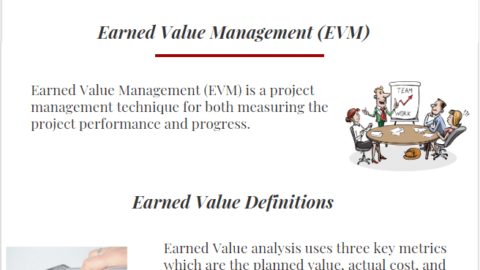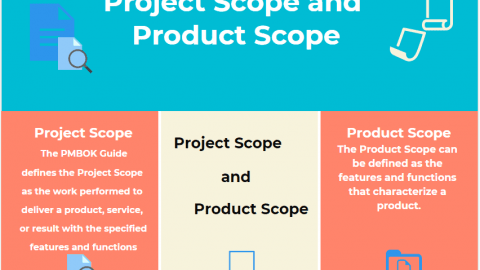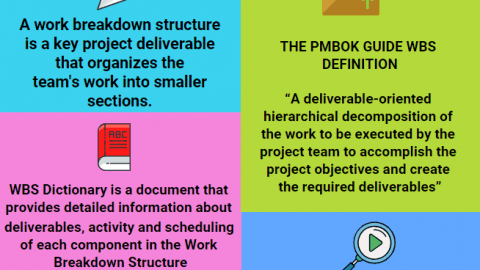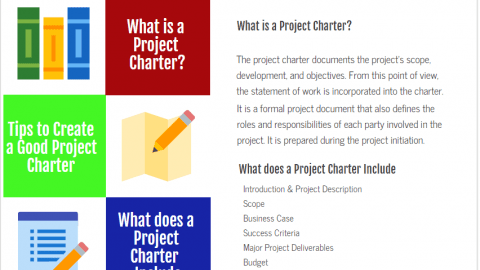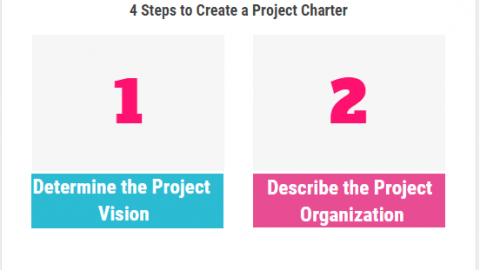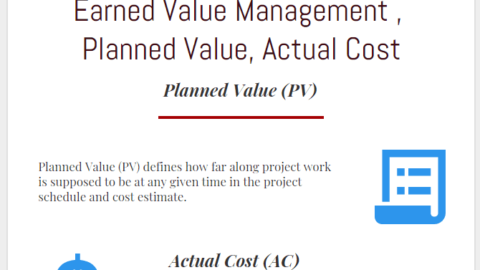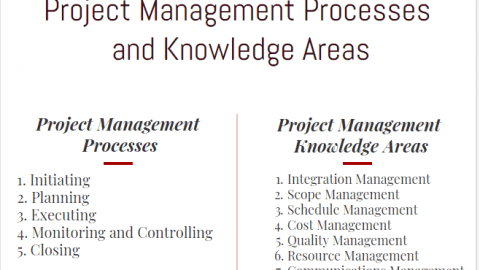Change Approval Process in Project Management
The “Project” will have a well-defined scope and varied responsibilities between contracting parties, subject to various types of contract conditions, linked to an aggressive schedule and tightly controlled budgets. This demands a rapid and structured process to deal with change management. A three staged process is suggested to be used in change approval. Note: It’s the project lead/projects manager’s discretion to use full change management stages or only “change notice or Potential Change Notice” method based on the smaller size and less complexity of the project, however, the change management system would remain same in either case.
Table of Contents
PROPOSED STAGES OF CHANGE APPROVAL PROCESS
STAGE 1 – TREND NOTIFICATION
A Trend is any deviation from the approved cost or schedule baseline within the existing approved scope of work. A Trend will provide a detailed description and estimate of any cost and schedule impacts.
The Trend Notification is the earliest recognition of a potential change. Trends can be and are encouraged to be raised in advance of a Project Variation Notice (PVN). The purpose of a Trend is to identify a possible condition during execution that needs to be elevated and mitigated at the earliest. Trend Notifications are considered immature in their development and are presented as “possibilities” for future Potential Variation Notices.
Trends are tracked in the Change Management Register showing the Trend identification number, lodgement date, Trend description, actions required, and pending status regarding approval to advance further.
Trends shall be logged using a separate tracking number to allow historical tracking of suspended and mitigated trends for reference. A Trend is not a scope change, and it impacts the project forecast only.
Trends that proceed to a Potential Variation Notice or directly to a Change Notice (CN) will follow the change process.
STAGE 2 – POTENTIAL VARIATION NOTICE
The Potential Variation Notice is the initial document that identifies a potential change to the project baseline or forecast. A Potential Variation Notice can be initiated by anyone on the project team (known as originator). Each team member must have a clear understanding of their scope, estimate, and schedule including quantities and initiate a Potential Variation Notice where there is any deviation and provides notification to the project team of a potential change to the project and is raised immediately upon identification of a change or when a Trend is authorized to advance to Stage 2.
The Potential Variation Notice will go through a process where the type of potential is determined. If the submission is accepted, the formal Change Notice Process (Stage 3) will be followed.
STAGE 3 – CHANGE NOTICE
Change Notice represents the fully substantiated, detailed and quantified change and forms the basis on which the potential change will either be fully approved, or subject to limited approval, rejected, or returned to the originator for revision and further detailing to enable a final decision, except where circumstances determine otherwise.
Where a Change Notice originates with a contractor the allocated Contracts Administrator must be involved in the review process and final drafting of any Contract or Purchase Order variation.
Work on the identified change will not commence without formal approval of the Change Notice. Where the change involves an active contract, work will not commence until a contract variation has been approved and executed by both Project management and the Contractor.
From a cost control perspective, the Change Order Request (COR) will be used as the primary means of capturing, formalizing, and approving all project changes such that the Approved Budget can be adjusted accordingly.
From a scheduling perspective, a Change Notice will be prepared to ensure all potential impacts to the project baseline schedule can be assessed and integrated to reflect the revised project milestone/completion dates, including all adjustments to ancillary schedule components such as project resources.
CRITICAL CHANGE APPROVAL
Should the change be considered critical and likely to impact the critical path, contracted milestones or planned project outcomes, a special meeting is to be convened by the project lead to expedite the process. Recommended general rule, due to the timing required for change approval process, all changes which impact milestone or activities having less than 5 days float, will be considered critical.
Where a Change Notice originates with a contractor, the assigned Contracts Administrator must be involved in the review process and final drafting of any Contract or Purchase Order variation.
Work on the identified change will not commence without formal approval of the change notice. Where the change involves an active contract, work will not commence until a contract variation has been approved and executed by both Project management and the Contractor.
MINIMUM INFORMATION REQUIREMENTS
To ensure any change or potential change is understood, the following minimum information is required for the submission to be evaluated and a recommendation put forward to the project lead/project manager.
If you are only interested in project management and not fully engaged in the field, it would be beneficial for your project to involve professionals who can help with project management, particularly those with expertise in a wide range of methodologies.
TREND NOTIFICATION:
- Description of Trend
- Title of Trend
- Originator
- Package Number
- Order of magnitude estimate, if available.
POTENTIAL VARIATION NOTICE:
- Fully completed Potential Variation Notice form including Potential Variation Notice reference number
- Description of Potential Variation Notice
- Title of Potential Variation Notice
- Brief basis or justification of the Potential Variation Notice
- Originator interpretation of the change classification
- Package Number/Contract Number
- Order of magnitude (OOM) estimate.
CHANGE NOTICE:
- Fully completed Change Notice form
- Full substantiated justification of change, scope, commercial and technical aspects
- Detailed costing subdivided into the project phases, with each line coded with WBS, commodity, phase and discipline, etc.
- All necessary backup documentation including vendor/supplier documentation, design, procurement, fabrication, logistics, construction and commissioning.
- Statement detailing the impact on schedule along with full analysis, and a recovery schedule to be considered by the project team.
POTENTIAL VARIATION NOTICE/ CHANGE NOTICE APPROVAL PROCESS
All Potential Variation Notice/Change Notice will be reviewed by the project manager and Change Management Meetings are to be organized by the Project Manager/Project Lead on a weekly or monthly basis, or at an agreed frequency based on the project intensity and need and are to be attended by appropriate Project Management team representatives with the suggested as a minimum attendee:
- Project Manager (Chair)
- Project Lead (Secretary)
- Project Controls Manager with support
- Risk Manager (If required)
- Project Team.
The Project Lead will be responsible for organizing and notifying relevant attendees of the meeting. Meetings will form the basis for reporting the status of Potential Variation Notices and Change Notices in the system, resolve issues on changes, as well as provide an opportunity to discuss/approve change events and approve urgent changes.
The acceptance status for each Potential Variation Notice/ Change Notice will be indicated on the Potential Variation Notice/ Change Notice form.
POTENTIAL VARIATION NOTICE STATUS:
- Rejected – Means that the request for Potential Variation Notice as submitted was not approved, as the effort may form part of the original scope, may be contracted elsewhere, or is not required and therefore no entitlements or further action is to be taken, and as such, will be notified to the originator.
- Revise – Means that the submission may be deficient or incorrect, and therefore needs to be reviewed and or altered in order to be reconsidered for approval. The originator is responsible for revision and re-issue and is to be undertaken in a timely manner to ensure Project objectives are not compromised.
- Accepted – Means that the Potential Variation Notice as submitted is recognised as a potential variation, but final decision will be governed by the formal approval of the Change Notice which will incorporate the detail and basis to enable a formal decision. Acceptance of a Potential Variation Notice does not imply approval.
CHANGE NOTICE STATUS:
- Rejected – Means that the request for change as submitted was not approved, as the effort may form part of original scope or is not required and therefore no entitlements or further action is to be taken.
- Revise – Means that the submission may be deficient or incorrect, and therefore needs to be reviewed and or altered in order to be reconsidered for approval. The originator is responsible for revision and re-issue and is to be undertaken in a timely manner to ensure Project objectives are not compromised.
- Limited Approval – This is only applied where the documentation as submitted is deficient and needs to be revised, but the basis of the change is accepted. This is normally applied to changes of an urgent nature, and limited approval for a specific defined scope and associated value will be granted in order to protect project objectives. This will enable the originator to address areas of deficiency in the change documentation while work proceeds and resubmit a compliant change notice for approval (An approval period should be set and agreed upon. It is recommended that it should not exceed 5 days).
- Approved – This certifies that the application for change as submitted has been accepted, duly signed off and approved according to the Delegations of Authority and as such, work must proceed to the conclusion in order to complete the contracted scope of work.
Additionally, the processing of Potential Variation Notice and or Change Notice the following notes will apply:
- In the event of scope changes, approval will impact the Current Budget and/or Forecast Final Cost (FFC), and may result in a variation to contract etc.
- In the event of approved Trends, this will initially impact the FFC, and may impact the Current Budget.
- In the event of budget shifts, these will impact the Current Budget of the transferring entities, with a net-zero effect to the overall Current Budget, FFC and schedule
- The project controls team shall update the current budgets, forecasts and make adjustments to the contingency that may result from Change Notice action, as may be appropriate.
Reference
A Basic Guide to Change Management, Rodel Marasigan

Over 35 years in the construction industry of combined working experience in the field of oil & gas refinery, pharmaceutical plant, waste water treatment & recycle water treatment plant, high rise building, module assembly, on-shore pipeline installation, power plant, industrial plant, heavy civil and Rails & Railways infrastructure. With a strong professional experience in all engineering works, advance computer knowledge and skills, strong leadership, motivation and can work independently. Has a professional background as Project Controls, Lead Planner, Snr Cost Engineer, System Analyst, Cost Analyst, Bid Estimator, Contract Management/ Administrator and Quantity Surveyor.


